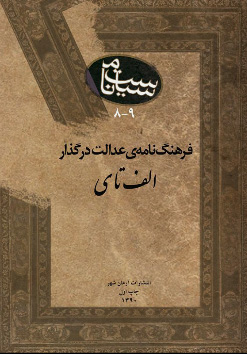خبرنامه حقوق بشر و جامعه مدنی آرمانشهر شماره ۱۵۷ سال هشتم – ویژه نوروز ۱۳۹۵
Saturday 19 March 2016
جهان
درهمین بخش: پیشخوان, جغرافیا, جهان, حقوق بشر, حقوق بشر و جامعه مدنی, موضوعات, نشریهها
آخرین آپدیت ها را بهوسیله فید ما دریافت کنید: فید کل سایت
آخرین آپدیت نظرات سایت را دریافت کنید: RSS 2.0

